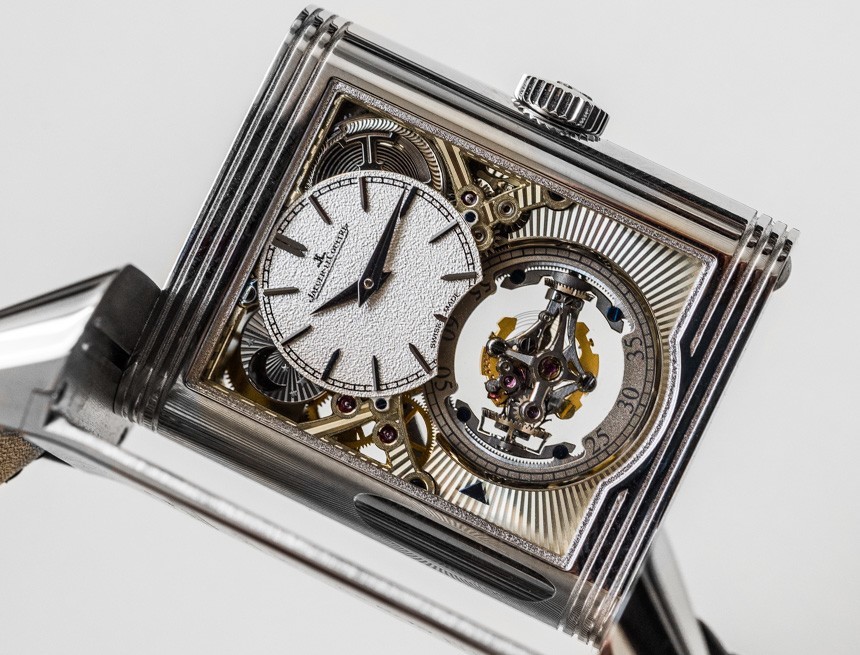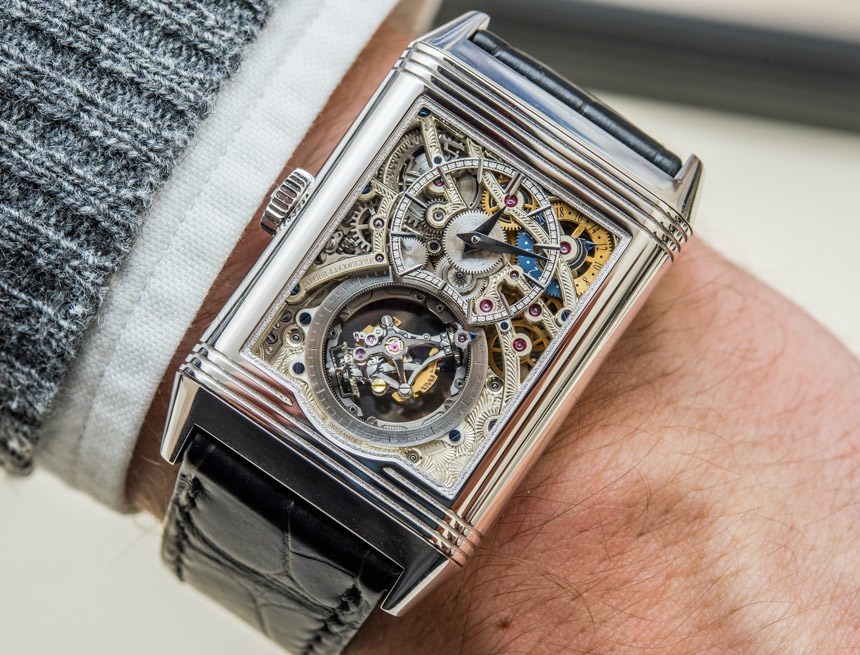
Please allow me to begin this hands-on look at the all-new Jaeger-LeCoultre Reverso Tribute Gyrotourbillon on a personal note. While cool, fascinating, and technically impressive modifications, twists, and turns on the evergreen tourbillon mechanism have come and gone, the Gyrotourbillon has always been one of my absolute favorites of them all. So much so, that I wrote my first ever watch article about the Jaeger-LeCoultre Gyrotourbillon I and II. Yet, despite having attended my fair share of watch events over the past three years, it was not until SIHH 2016 that I could finally go hands-on, and spend some intimate time with a Gyrotourbillon piece… And that piece was the latest and greatest version of them all, the Jaeger-LeCoultre Reverso Tribute Gyrotourbillon.
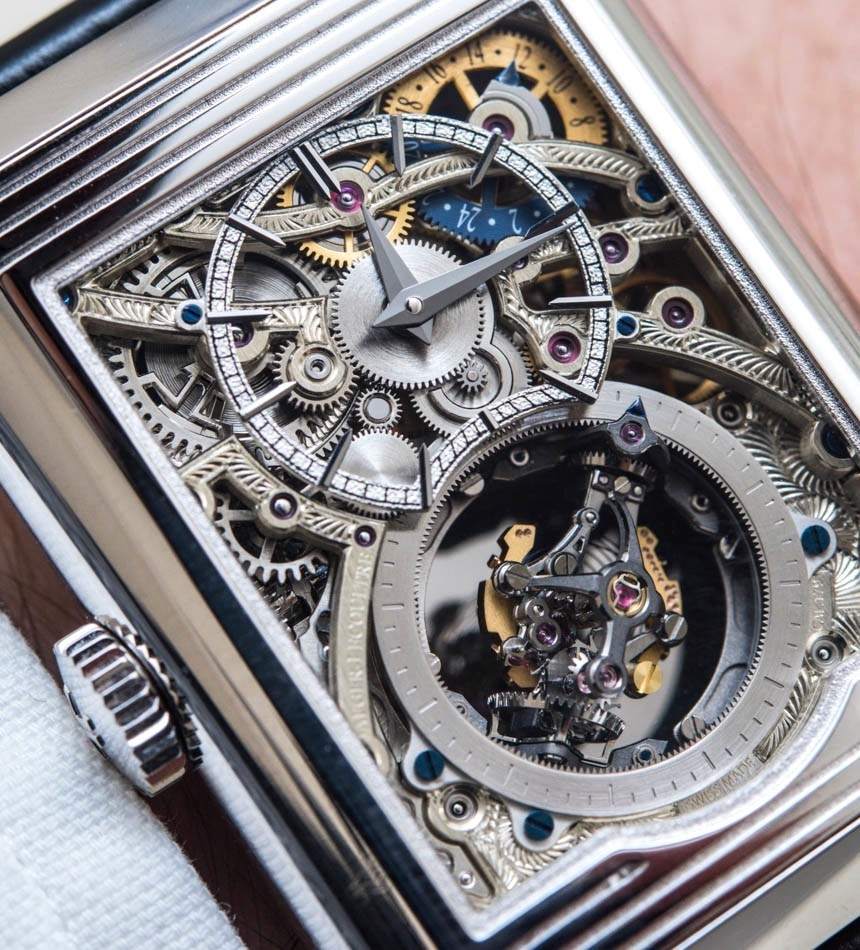
“Never meet your heroes!” I have heard this many times, and it is precisely what I had in mind when, as we made our way to one of the private press rooms inside the Jaeger-LeCoultre booth accompanied by some of the wonderful people from the brand, I learned that we’d get to see the new Jaeger-LeCoultre Reverso Tribute Gyrotourbillon hands-on. We are in the privileged position that we get to handle pretty much all of the hot new releases of the fair – but after so many years of the Gyrotourbillon always getting away, you can surely imagine how excited I was about having a solid 20 minutes of “private time” with one of my all-time grails. But that’s more than enough about me; so let’s see how the new Jaeger-LeCoultre Reverso Tribute Gyrotourbillon measured up to expectations – and its $270,000 price tag.
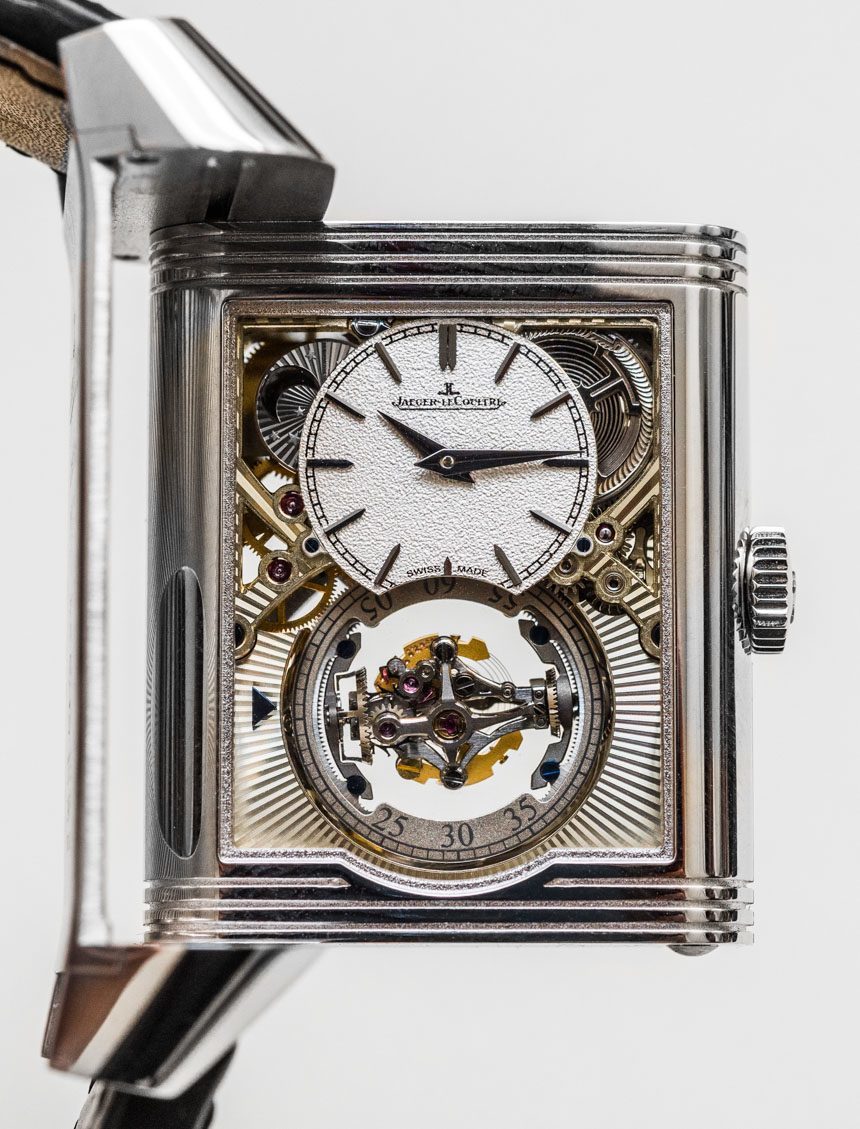
The Jaeger-LeCoultre Reverso and its reversible, two-sided case certainly needs no introduction to anyone. It’s been around for some 85 years now, and although the brand has always been rather creative when it came to finding novel ways to utilize its cash-machine collection of reversible watches, some of the most memorable of these efforts remain the most complicated ones. The Gyrotourbillon, with its three-dimensional, double-axis, endlessly spinning escapement downright demands to be viewed and admired from both sides.

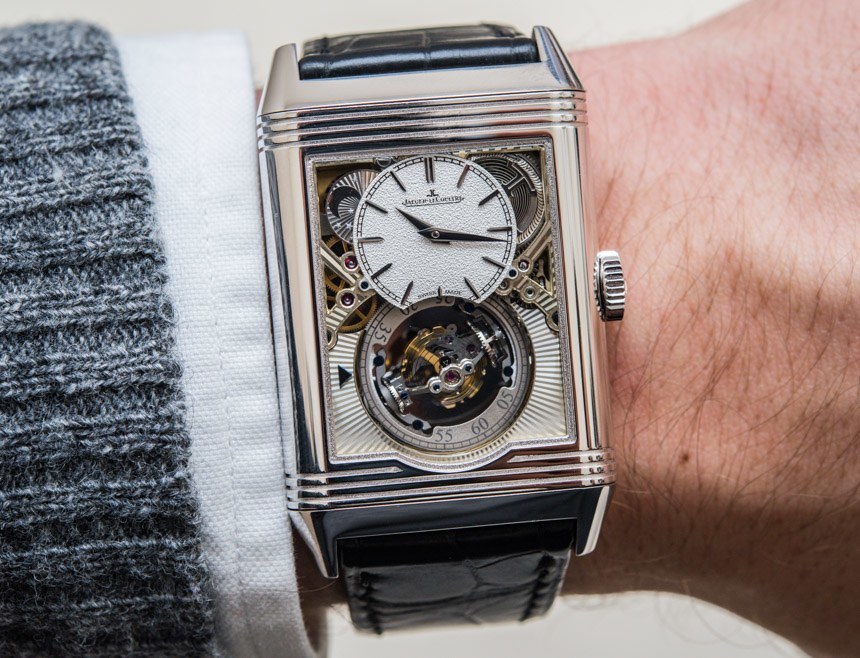
The front – let us call it that when the crown falls to the righthand side of the watch – has a silvered and grained dial with dauphine hands, a highly legible and elegant design, with a day-night indicator to the left of the main dial, and a skeletonized cage for the mainspring barrel with the “JL” logo to its right. The Gyrotourbillon is given what seems to be an ever-so-slightly larger stage to be on display, with the outermost frame of the tourbillon sporting a seconds display – sort of, as only the numerals between 55 to 05, and 25 to 35 are visible.
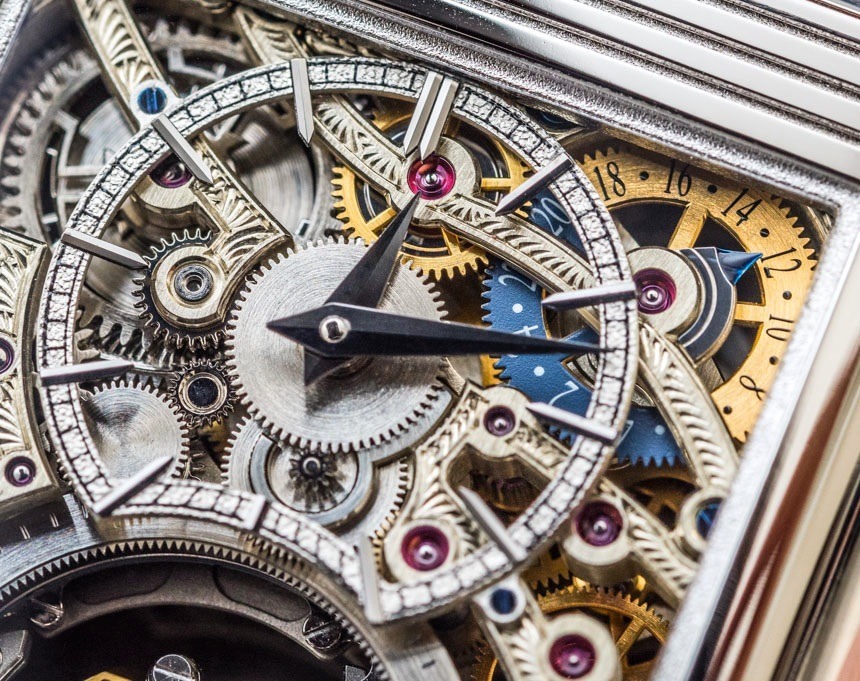
The back is a beautiful maze of multi-layered and heavily skeletonized and engraved components. Upon a closer look, you will see that what appear to be overlapping components set on a single plane are actually a number of bridges, dials, and indices, all situated a fraction of a millimeter above or below one another. The dauphine-style hands remain, which isn’t the best for legibility given the missing dial. Bear in mind, though, that the time indication on this “Recto” side works as second time zone display that can be set via a pusher hidden in the top of the reversible case. Very clever and highly convenient stuff – in case you were planning on performing some serious globetrotting with a Jaeger-LeCoultre Reverso Tribute Gyrotourbillon on your wrist.
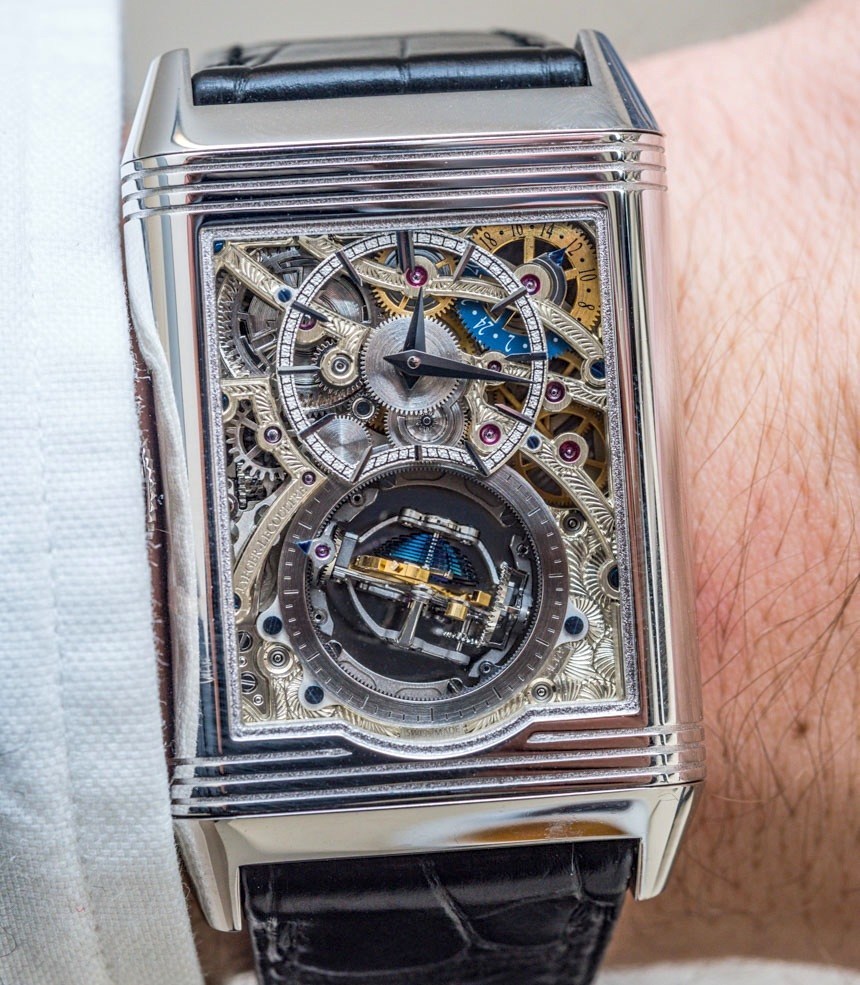
The case is in platinum – you know, to match the occasion – but the big deal with it is that it actually is smaller than its predecessor, the Reverso Gyrotourbillon 2. In fact, it is a lot smaller. The Gyro-2 was a hefty beast, at 55.4 millimeters tall, 36mm wide, and a massive 16mm thick. By contrast, the Jaeger-LeCoultre Reverso Tribute Gyrotourbillon measures a much more manageable 51.2 by 31 by 12.4 millimeters – a size that is perfectly wearable for nearly all wrist sizes. Weight is down substantially, as well: despite the platinum case, this latest iteration wore surprisingly light.
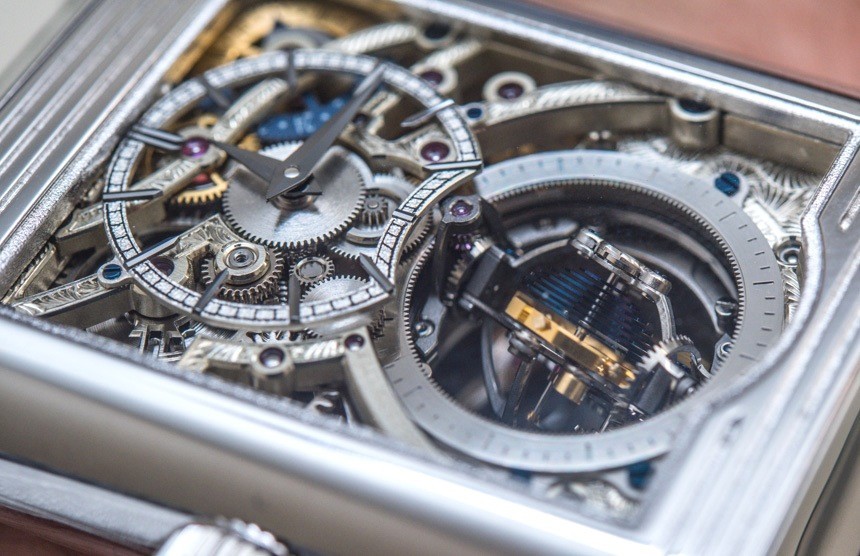
Needless to say, all this is down to the serious diet that JLC’s engineers have put the Jaeger-LeCoultre Reverso Tribute Gyrotourbillon movement through. It is composed of 385 parts, 52 jewels, and 2 barrels – although, despite the latter, impressive-sounding specification, power reserve is a mere 38 hours. Still… I think we can agree that keeping a Gyrotourbillon wound scores high on the list of ultimate first-world problems.
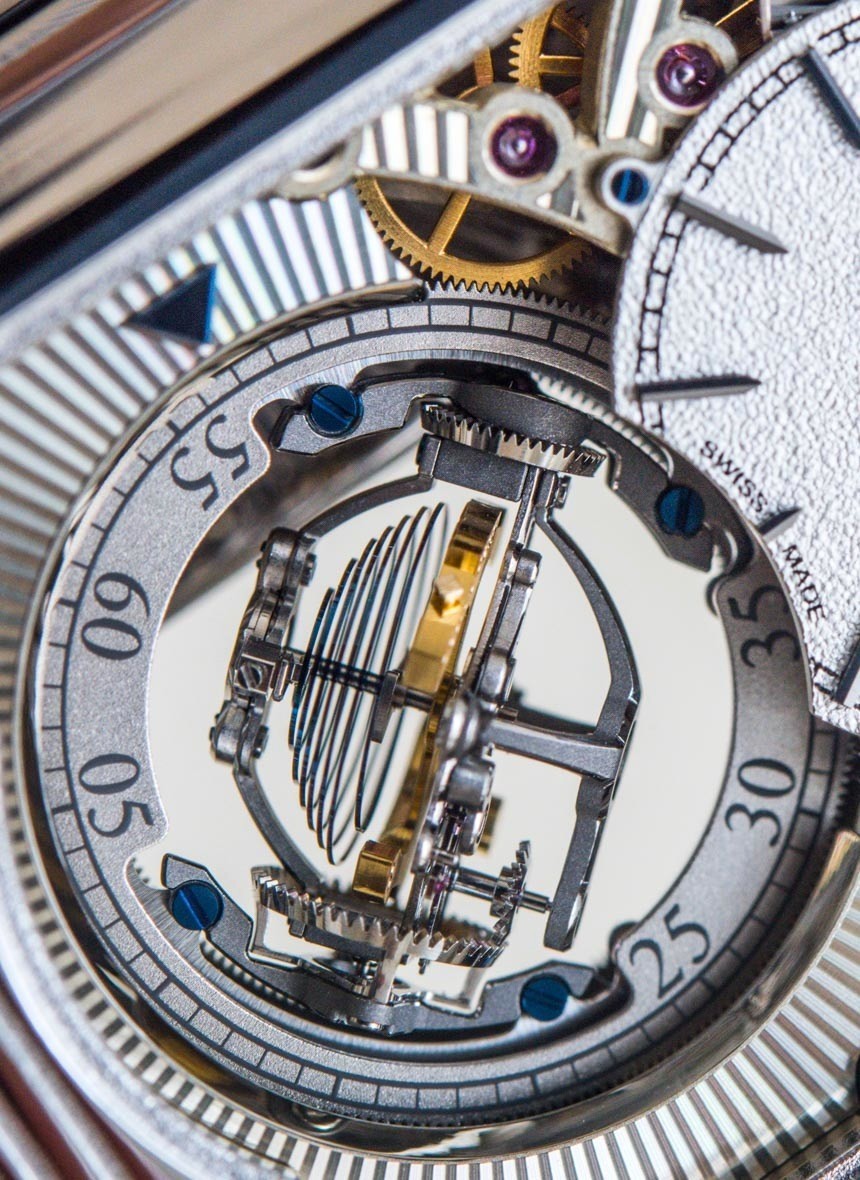
Despite the 30% lighter movement and the 40% smaller overall case size, the Gyrotourbillon has lost none of its rare, “three-dimensional appeal.” The cages of the tourbillon have been made extremely thin, which makes the mechanism appear to be more nimble and poised. The Jaeger-LeCoultre Reverso Tribute Gyrotourbillon uses the brand’s in-house-made, hemispherical balance spring, fitted onto an also rather unique-looking balance wheel – that isn’t really a wheel at all, and more like two curved, T-shaped components welded together.
The driving force is delivered by that gold-colored wheel that you see at the top of the image just above: it meshes with the large, outermost disc of the tourbillon. This one single point of contact makes the Gyrotourbillon come alive and perform its double-axis, three-dimensional dance.

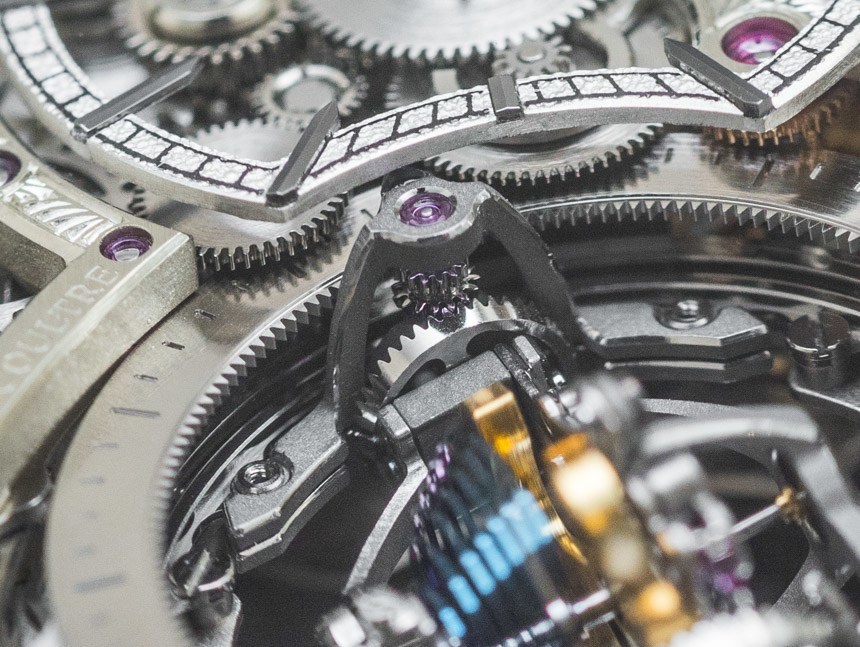
All that weight-shedding in the Gyrotourbillon’s assembly allowed for an increase in rotation speed: the outer cage still takes one-minute to make a full rotation, while the inner one – the one that rotates perpendicular to the plane of the dial – has been sped up to 12.65 seconds from 18 seconds in the previous version. This makes for a rather frantic-looking ballet: the little device appears to expose some weird sense of urgency, as though it is trying to make its way around its axis as quickly as possible.

